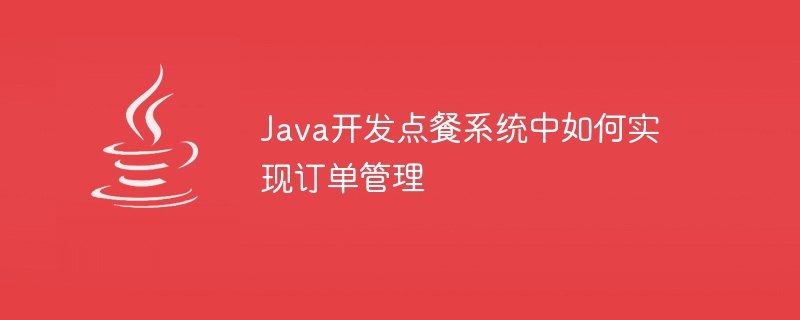

In the catering industry, as consumers' demand for ordering food continues to increase, many catering companies have begun to introduce ordering systems to improve service efficiency and customer satisfaction. As a powerful and easy-to-maintain programming language, Java is widely used in the implementation of ordering systems. This article will introduce how to implement order management in a Java ordering system.
1. Management of basic order information
Basic order information is one of the most basic information in the ordering system. It includes the customer’s order content, price, number of diners, and service time and other information. Therefore, when developing an ordering system in Java, a database of basic order information should be established, including table structures, fields, etc.
It should be noted that when establishing the database, the modification and query functions of order information need to be taken into consideration, which requires the management of basic order information to have the following functions:
1. Order addition
2. Order deletion
3. Order modification
4. Order query
Through the above four functions, the order management of the ordering system can be made more convenient and Efficient.
2. Order status management
In the ordering system, each order has a status, including paid, unpaid, processed, unprocessed, etc. Therefore, when developing a food ordering system in Java, you need to consider how to manage the order status.
Specifically, you can add an order status field to the basic order information to record the status of the current order. By changing the value of this field, the order status can be managed. For example, after a customer pays, the system changes the order status from "Unpaid" to "Paid."
In addition, managing order status also requires the following functions:
1. Order status query: You can query the current status of an order
2. Order status change: Yes Modify the order status from one status to another
The implementation of the above two functions can be achieved by designing a status management table.
3. Data statistics and analysis
When developing the ordering system in Java, data statistics and analysis functions should also be taken into consideration. Data statistics and analysis functions can help catering companies understand their own business conditions and better adjust their business strategies.
Specifically, the data statistics and analysis functions need to realize the following functions:
1. Order quantity statistics
2. Order amount statistics
3. Sales volume Statistics
4. Dish sales statistics
Through these statistical analysis functions, more detailed business data can be obtained to help catering companies conduct better business management.
To sum up, order management in the Java ordering system requires the management of basic order information, order status management, and data statistics and analysis functions. Only by doing better in data management and analysis can the ordering system be made more complete and efficient.
The above is the detailed content of How to implement order management in Java development ordering system. For more information, please follow other related articles on the PHP Chinese website!
 How to use digital currency
How to use digital currency
 what is okx
what is okx
 Software testing tools
Software testing tools
 How to change ip address in linux
How to change ip address in linux
 What are the advantages of the Spring Boot framework?
What are the advantages of the Spring Boot framework?
 What are the spring frameworks?
What are the spring frameworks?
 How to use plot function in Python
How to use plot function in Python
 Introduction to the main work content of front-end engineers
Introduction to the main work content of front-end engineers
 What is the shortcut key for brush size?
What is the shortcut key for brush size?




